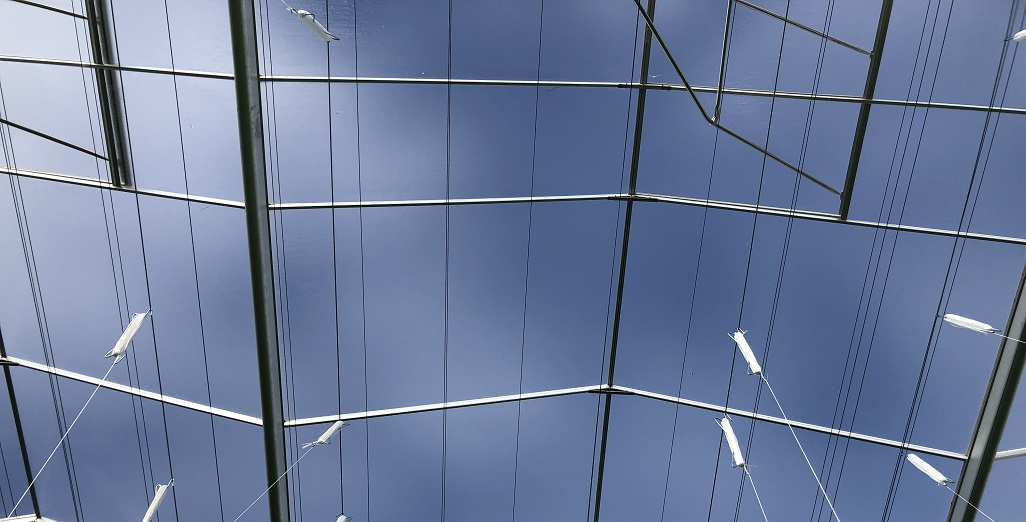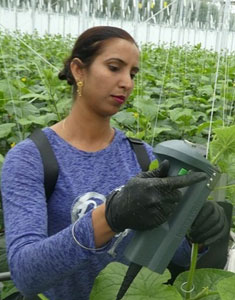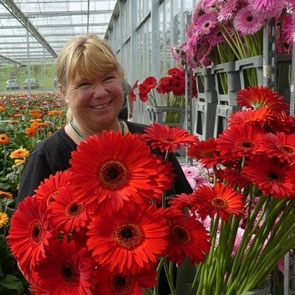Sign up here to subscribe to the Grower2grower Ezine. Every two weeks you will receive new articles, specific to the protected cropping industry, informing you of industry news and events straight to your inbox.
Aug 2022
Sub-Tropical Fruit production should be taken seriously

Commercial sized farms would need to be established to adequately supply domestic markets.
Last week an episode on Country Calendar-, featured a pineapple and banana growing operation in Northland. For many years now I have been promoting bananas and you may be surprised where I see them planted. They are currently growing well in my garden. I have also noticed many in the South Auckland region. The main outdoor production of bananas is however located in the two warmest regions of the country, Northland and Gisborne.
The major issue I have found growing in my area is they are slow to mature and produce a smaller size banana than if they came from a warmer climate. Last year I nearly lost all of my plants due to multiple frosts. We recorded eight frosts over a two-week period whereas this year we have only had one frost so far. I have them planted in a sheltered area and thus far they are surviving but I still don’t expect to see a stalk forming this summer. If I had a greenhouse, even if not regularly heated, they would be flourishing.
For commercial crops to be successful, I am confident they will benefit immensely from growing in protected cropping structures. Even plants outside in Northland or Gisborne would benefit from being indoors. Not only would it speed up the growing process but it would also give much better control to the grower in terms of irrigation and managing production.
Bananas, locally grown, (generally in the North and Gisborne) are currently being sold mainly at farmers markets and some independent super markets but this is not currently nationwide. If we want to get serious, we need at minimum a strong, seasonal grown supply for the entire domestic market. The supermarkets need certainty of supply, not only for them, but for their customers. You cannot expect the supermarkets to push small volumes of product in each store – they need volume, continuity and quality. To supply volume, we require scale.
To grow in a greenhouse structure, you could either grow in pots/substrates or the soil. We need to settle on the varieties suited to the greenhouse height and climate in NZ and then be able to churn out hundreds of thousands of plants from tissue culture. We could achieve this relatively quickly, depending on plant spacing and the height and strength of the structures required. There are few labour tasks that need to be carried out and by having the knowledge readily available, figuring this cost annually should be quite simple.
What a greenhouse will give you that outside won’t is a crop faster to maturity and potentially larger bananas or pineapples. The benefit from just a few extra degrees of heat and preventing cold rain cooling the soil will be the two major contributing factors to the crop’s productivity increases as compared to growing outdoors.
As for the pineapples, if you watch the country calendar episode, you will see them growing underneath and between the banana plants. It is not that difficult to have another crop such as pineapples growing in the same area. There may be some issues around ensuring that the irrigation is appropriate but it has serious potential. There is also no reason why you could not grow pineapples in substrates.
https://www.hortidaily.com/article/9176954/portugal-growing-pineapples-in-a-greenhouse/
https://www.tvnz.co.nz/shows/country-calendar/episodes/s2022-e21

Image above demonstrates the multipurpose nature and what other plants could be grown in the space between the rows. The image on the RHS is a well manged greenhouse banana crop grown in the soil with Grandmother, Mother and Daughter plants (pups) growing in sequence.

Pineapple Plants are in fact: part of the Bromeliad family, which mainly thrive in the tropical Americas. This herbaceous perennial has long sword-like leaves growing in a spiral around a central stem. Each pineapple plant will produce one flower stalk and, consequently, one pineapple fruit.
What this image also demonstrates is that pineapples can be grown in high tech greenhouse structures on benches. Food for thought – literally

Image above, a pineapple grown in a Northland greenhouse.
Article written and compiled by Stefan Vogrincic
All Article’s checked and edited by Marie Vogrincic
I appreciate your comments. Please feel free to comment on the grower2grower Facebook page:
https://www.facebook.com/StefanGrower2grower/
CLASSIFIED
Photo
Gallery
Subscribe to our E-Zine
More
From This Category

Tomato grower applies Tobre after contamination

KWS inaugurates new R&D facility in Uberlândia, Brazil

John van Santen joins the management of Metazet

Workshop for Auckland’s Korean tomato growers held last week

Could the Global Boom in Greenhouses Help Cool the Planet?










































